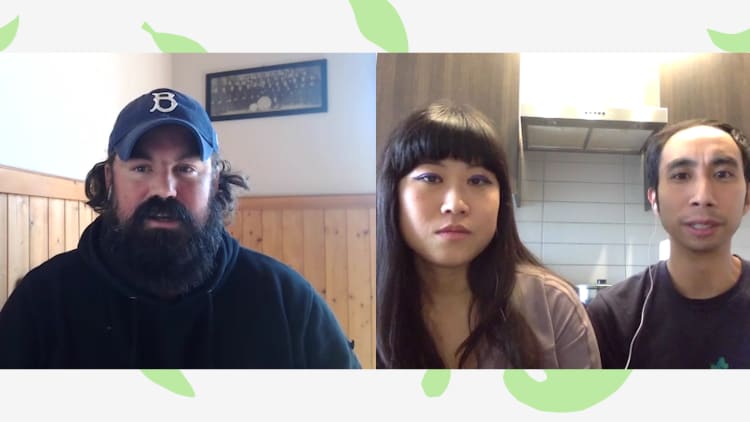In 2013, shortly after my husband and I got married, we bought a brand new Jeep Wrangler. Moving in together and merging finances surely meant we could afford the $400 monthly payment. At least that's what we told ourselves.
But with the Jeep payment, a smaller payment on another car, a mortgage, his child support, and a plethora of other bills, expenses, and discretionary spending, our dual income wasn't going as far as I thought it should.
I began looking to answer the question above and more. How were other people doing it? How could we save more money? Were we investing enough for our future? Would we ever be able to retire?
After some false starts and one-size-fits all advice from the internet, I stumbled upon an article introducing me to the term FIRE, or financial independence, retire early, and started reading everything I could about it.
I was 45 and my husband was 46, which put us past the age many FIRE followers were retiring. But I quickly realized making changes could still allow an early retirement for us. It took me several tries to persuade my husband retiring before 67 was possible. Eventually, the spreadsheets and figures convinced him, and we set out to achieve that goal.
Initially, our goal was to retire in 2024, the year he would turn 58. We knew it might not be easy to add more than $1 million to our combined net worth of $300,000 in just over 10 years. Yet believing it was possible was incredible fuel to get us going. Visible progress stoked the flames, and we achieved financial independence within six years.
Here's how we did it.
Little things add up
Though some of the first money-saving tips I read seemed generic, we began following them. We canceled our cable, dined almost exclusively at home, brown-bagged lunches, and even cut our own hair.
Learning to be mindful of where our money was going and spending wisely by evaluating whether something was a need or just a want also kept more money in our pocket. The bonus was it helped us stop accumulating more stuff and taught us to repurpose already owned items.
Then we put the savings from doing all these small things towards paying down $50,000 in car loans. Once those were eliminated after 18 months, we decided to sell both vehicles and purchased used older models we're still driving today. And then we invested the difference.

Video by Stephen Parkhurst
Minor tweaks make a difference
Increasing contributions to our 401(k) savings plans, rolling old 401(k)s into traditional individual retirement accounts (IRAs), and contributing to new Roth IRAs all put more funds towards retirement investing. Making some minor adjustments to what we were investing in maximized the increased funding.
We also cut down the administrative fees we were paying by shifting our investments from various individual stocks and mutual funds to index and exchange-traded funds (ETFs).
While 2% or 3% doesn't sound like much, it becomes quite substantial as your account balances rise. Cutting those expenses helped our money grow faster.
Bigger moves, larger payoffs
Cutting expenses was undoubtedly helping us progress towards financial independence. Making some strategic career moves to increase our income accelerated the journey.
My husband is a CAD designer in the auto industry and I worked primarily as an executive assistant and program manager. Due to the combination of a healthy job climate in our area, a strong career network, and increasing our education and skills, we each changed employers twice and grew our salaries by more than 25%.
This income growth enabled us to put more money towards paying off our house. To speed this up even further, we refinanced to a 15-year mortgage. That move drastically cut down the interest on our loan and put more of our payment towards the principal, so we could build our equity quickly.

Video by Stephen Parkhurst
The impact of the pandemic, and what's next
All those big and little changes, along with a great bull market and an inheritance of roughly $40,000, helped us become financially independent. I was able to leave full-time employment in February of 2018, and my husband was set to start his early retirement in 2020.
We put the brakes on that plan due to the pandemic but expect him to make the transition mid-2021. While the spreadsheets and retirement calculators indicate we'd be OK if he made the move now, we're creating a bigger safety net.
We're in the midst of preparing for our next chapter, too. We've recently sold our house and downsized to a small rental. We'll stay there until it's safe to set off traveling the country, eventually settling down in Florida, where we own a home near a 55-and-over community.
Figuring out how to retire comfortably
Whether you're interested in retiring early or traditional retirement is more your speed, take elements from the FIRE movement to progress on your goal.
Spending wisely, saving and investing more, eliminating debt, growing income, tracking net worth, and staying flexible and persistent can help you reach financial independence. Then you can retire on your terms, early or not.
Amy is the co-founder of the award-winning site Women Who Money and the founder behind award-winning Life Zemplified. Financial independence allowed her to leave full-time employment in 2018 and she now devotes herself to family and passion projects.
The article "How We Increased Our Net Worth By $1 Million in 6 Years and Retired Early" originally published on Grow+Acorns.


